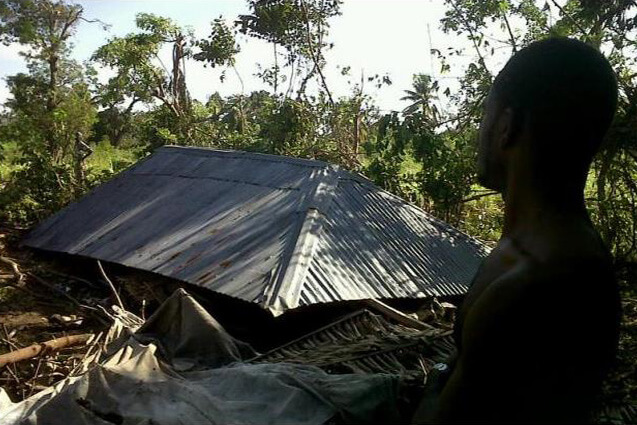As Hurricane Sandy powers its way towards the east coast of the USA, it leaves several countries in its wake. The Caribbean felt the full force of the Category 1 storm, with heavy rains pelting Haiti, Cuba, The Bahamas and Puerto Rico.
Officials have raised the storm-related death toll in the Caribbean to at least 71. 54 of those killed are from Haiti, a country which is still struggling to rebuild following the devastating earthquake of January 2010 and where an estimated 400,000 people are still living in tents and temporary shelter. Infrastructure has been damaged in parts of the country, cutting off roads and damaging telecommunications. Agricultural crops and livestock have also been hit hard, particularly in St-Louis du Sud and Grande Anse.
Five of the eight areas where ActionAid Haiti works have been affected by the hurricane, including Grand-Anse where an estimated 34 families have been displaced; and Mariani, where approximately 595 families are now in need of food. In Ti Sous, a camp where ActionAid Haiti works, approximately 80 tents housing families displaced by the 2010 earthquake have been destroyed. In Thiotte, in the southeast, 17 families forced to flee their homes by the hurricane are taking shelter in a Community Communication Centre built by ActionAid.
“Many people in the capital are still living in tents since the earthquake that struck in 2010. These tents cannot withstand strong winds and flooding, so many people have been made homeless again,” said Daniel Gedeon, ActionAid’s Emergency Response Manager.
ActionAid Haiti response
ActionAid has released funding from our rapid response fund, to kick start the immediate response to Hurricane Sandy.
ActionAid’s response includes: Ensuring survivors are safe and medical care is reaching those who need it. Cash for work to help people plug the gap in lost income and to shore up roads, homes and agricultural land. Goats and chickens to help meet household needs. And seeds and tools for farming.
“A critical priority is to prevent a return of the cholera outbreak, as floods can cause unsanitary conditions. We are giving out hygiene kits to prevent this from happening. On top of that there has been a lot of crop damage, so food prices could rise,” said ActionAid’s Emergency Response Manager Daniel Gedeon.
Our local partners are undertaking rapid assessments in the areas where we work, to gather more information on the people affected – including the wellbeing of ActionAid-sponsored children and their families – and their key needs. As in similar disasters in Haiti in recent years, the main concerns include access to food, water, shelter and health/medical supplies.
Beyond the immediate response, we’ll be looking to expand our housing programme – initiated in response to the 2010 earthquake – and our work on education.
Reducing risk
There was some positive news from the town of Philippeaux where our disaster risk reduction work provided some protection against the usual storm effects.
Gullies and channels constructed by local people as part of a cash for work programme with our partner COZPAM in the aftermath of the 2010 earthquake helped divert rainwater away from homes that would otherwise have being engulfed by floodwaters and debris.
Philippeaux resident, Mrs. Bernard Pierre, told ActionAid how this time when the hurricane hit it was different:
Thanks to ActionAid and COZPAM, we are not living the same situation. Before, we had mountains of garbage and dirt in front of us, now they are gone. The [disaster risk reduction] work is fruitful and we are happy – this work raises our dignity.
A reminder of why all of ActionAid’s emergency response programmes include work with communities to reduce risk, save lives and protect assets in the event of future disasters
 Author: Claudine Andre
Author: Claudine Andre




